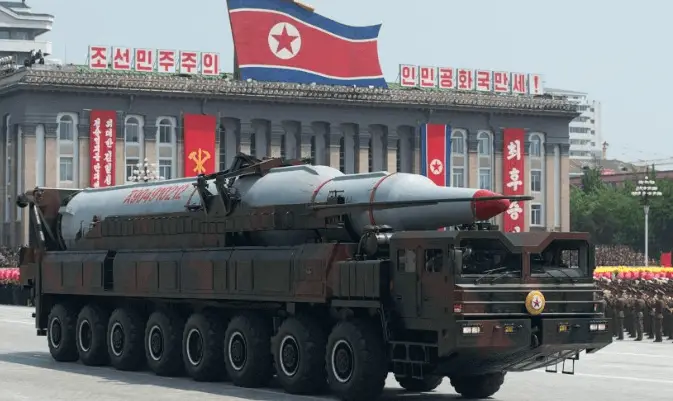On August 29, North Korea conducted a successful test of the Hwasong-12 medium-range ballistic missile. As KCNA agency reported on Wednesday, the leader of the country, Kim Jong-un, who led the launch, described it as one of the stages for preparing a strike against the Pacific island of Guam in order to contain the US armed forces in the region.
“Kim Jong-un expressed great satisfaction with the successful launch and noted that the current missile tests are the first step in preparing for the Korean People’s Army military operation in the Pacific and the prelude to containing Guam, the advanced invasion base,” the report said. In addition, the leader of the North Korea ordered further rocket launches against suspected targets in the Pacific Ocean.
In early August, the agency circulated a report on the development of a North Korean military strike plan in the waters of the island of Guam, where the US military base is stationed. It noted that four Hwasong-12 missiles should fly about 4 thousand km’s, including in the airspace over the Japan and then fall into the water 30-40 km from Guam.
Brewing Tensions Between the US and North Korea
In addition, according to the document, the countries in which North Korean workers are employed will be prohibited from increasing their number. The document also obliges states not to let in their ports the vessels caught by the UN Security Council’s special committee in violation of the sanctions regime. Sanctions also envisage targeted measures against 13 people and enterprises related to Pyongyang’s nuclear and missile programs.
The South Korean media quoting the North Korean newspaper statement of intent to turn the mainland into an “incredible sea of fire.” In turn, the Korean People’s Army reported that it is developing a plan for a preemptive missile strike against US military facilities on the Pacific island of Guam, including the Andersen airbase, where B-52 strategic bombers and American submarines are stationed.
However, not everyone took this argument. Against THAAD is China. Last year, Chinese Ambassador to Seoul Qiu Guohong said that the deployment of a missile defence system in a neighbouring country could “put an end to all progress in relations between the two countries.” The Chinese leadership fears that THAAD “will violate the strategic balance in the region, lead to an arms race and form a vicious circle in the spirit of the Cold War, which ultimately will only intensify the tension [in the region].”
In addition, they actively designate their presence in the region of the US Navy. So, in May, two aircraft carrier strike groups (AUG) of the US Navy conducted exercises in the Sea of Japan. After their completion, the strike group led by the nuclear-powered aircraft carrier Ronald Reagan remains in the northwestern part of the Asia-Pacific region, since it is based at the port of Yokosuka near Tokyo. The strike group of the atomic aircraft carrier Carl Vinson headed for its base in California, but almost immediately it was replaced by AOG, led by the nuclear aircraft carrier Nimitz, to East Asia.
In turn, Pyongyang is well aware that an attack on the US or its allies will be fraught with the destruction of the current regime as such. Therefore, the latest actions of Kim Jong-un, according to experts, do not indicate an intention to unleash a major war, but a desire to raise the status of the DPRK in the international arena. Another thing is that with such an unpredictable and impulsive leader like Trump, the current conflict from the “cold” at any moment can become “hot.”





